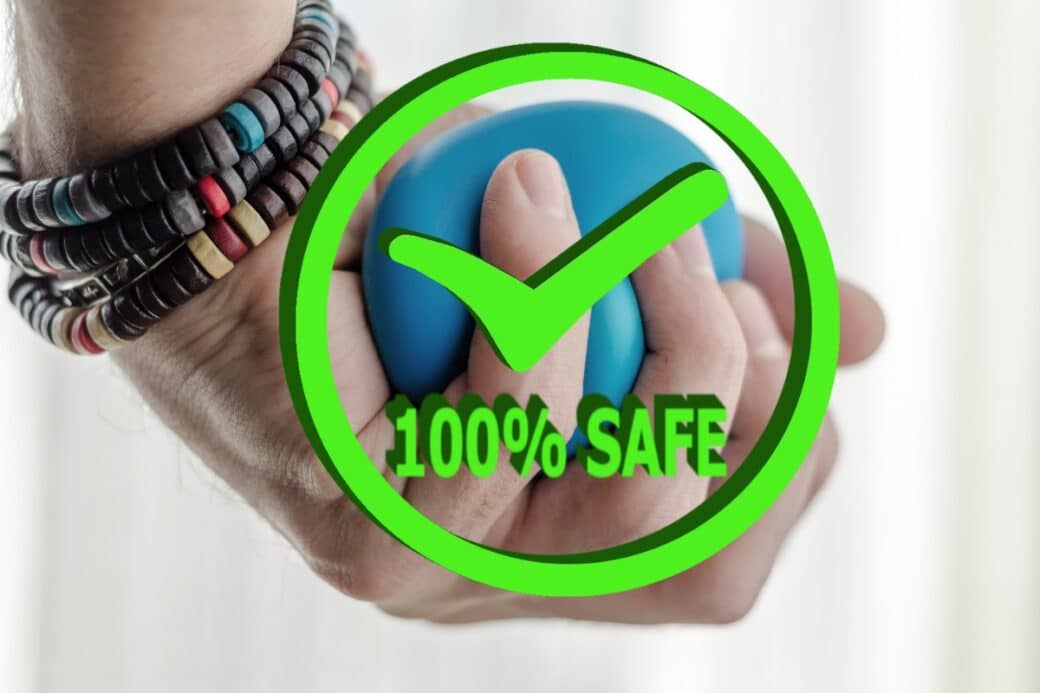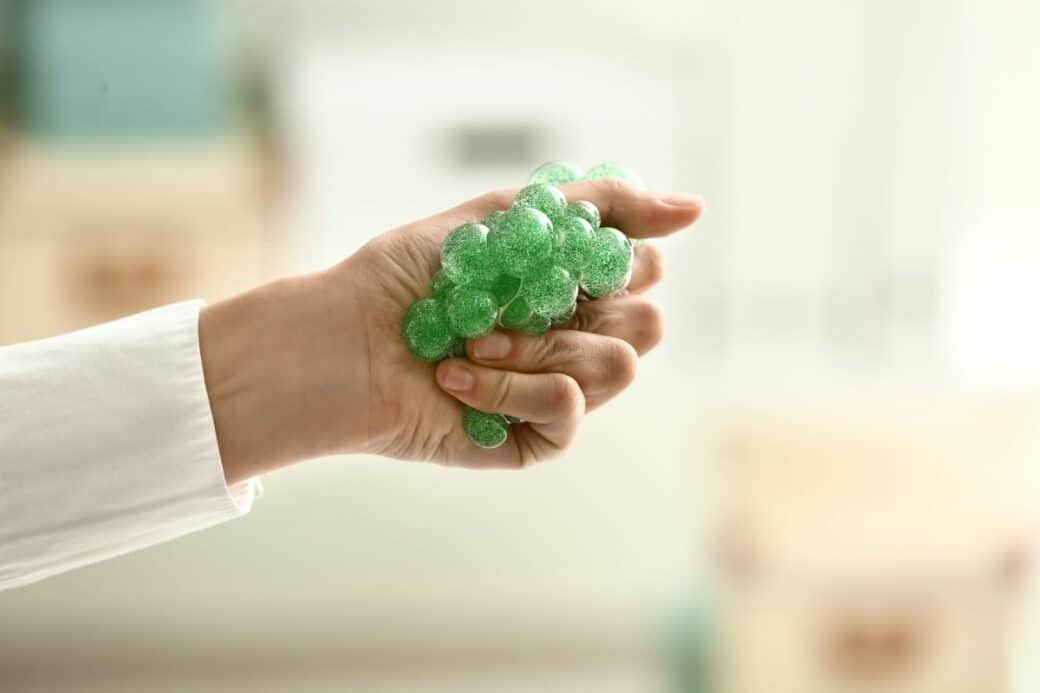In this article, we will explore the question that many of us may have wondered about: Are stress balls non-toxic? Whether you use stress balls as a tool to relieve tension or just enjoy squeezing them, it’s important to ensure that they are safe for both you and your loved ones. Join us as we delve into the world of stress balls and uncover the truth about their toxicity.

Are Stress Balls Non Toxic: The Importance of Non-Toxic Stress Balls
When it comes to relieving stress and promoting relaxation, stress balls have become a popular choice for many individuals. These squishy little balls are not only fun to squeeze but also offer a wide range of benefits for your mental and emotional well-being. However, it is crucial to ensure that the stress balls you use are non-toxic and safe for both you and the environment.
Link Between Stress Balls and Stress Relief
Stress balls have been proven to be effective in reducing stress and anxiety. Squeezing a stress ball can help release tension and muscle tightness, providing a physical outlet for your stress. The repetitive motion of squeezing and releasing the ball can also help distract your mind from stressful thoughts and promote a sense of calmness. By incorporating stress balls into your daily routine, you can experience a significant reduction in stress levels, leading to improved overall well-being.
Potential Health Hazards of Toxic Materials
While stress balls can be advantageous for stress relief, it is important to be aware of the potential health hazards that can arise from using stress balls made with toxic materials. Toxic materials such as phthalates, lead, and mercury can pose serious health risks when ingested or in contact with your skin. These substances have been linked to developmental delays, hormonal disruptions, and even cancer. Therefore, it is essential to know what materials are used in the manufacturing of stress balls and choose non-toxic options to safeguard your health.
Materials Used in Manufacturing Stress Balls
Common Types of Materials
Stress balls are typically made from various materials, each with its unique characteristics. The most common materials used for manufacturing stress balls include foam, gel, silicone, and rubber. Foam stress balls are soft and lightweight, making them a popular choice for stress relief. Gel-filled stress balls provide a squishy and malleable texture, while silicone stress balls offer a more firm and durable feel. Rubber stress balls are often bouncy and provide a tactile sensation. Understanding the different materials used in stress balls can help you make informed choices when selecting a non-toxic option.
Understanding Non-Toxic Versus Toxic Materials
Differentiating between non-toxic and toxic materials used in stress balls is crucial for your safety. Non-toxic materials are those that do not contain harmful substances and are safe for both humans and the environment. On the other hand, toxic materials pose significant risks when exposed to the body or surroundings. When purchasing stress balls, look for those made from non-toxic materials such as natural rubber, BPA-free silicone, or eco-friendly foam. These alternatives ensure that you can enjoy stress relief without compromising your health.

Regulations Guiding the Making of Stress Balls
Legal Standards for Toy Manufacturing
The production and sale of stress balls, like any other toy, are subject to legal standards and regulations. These standards aim to ensure the safety of consumers, particularly children, who may come into contact with stress balls. In countries like the United States, stress balls fall under the jurisdiction of regulatory bodies such as the Consumer Product Safety Commission (CPSC) and must comply with specific safety regulations. By adhering to these legal standards, manufacturers can guarantee that their stress balls meet the necessary safety requirements.
Monitoring Organizations and Their Influence
In addition to legal standards, monitoring organizations also play a significant role in regulating the safety of stress balls. These organizations, both governmental and non-governmental, conduct inspections and provide certifications to stress ball manufacturers who meet their safety criteria. For instance, the ASTM International, a globally recognized standards organization, has developed guidelines for toy safety, including stress balls. When a stress ball bears the mark of such organizations, it indicates that it has undergone rigorous testing and meets specific safety standards.
The Dangers of Toxic Substances in Stress Balls
Ingestion and Skin Contact Risks
Toxic substances present in stress balls can pose risks through ingestion or skin contact. Children, especially those prone to putting objects in their mouths, are at greater risk of accidentally ingesting toxic materials. Furthermore, skin contact with these substances can lead to irritation, rashes, or even allergic reactions. It is essential to be aware of the potential dangers and choose non-toxic stress balls that eliminate these risks, especially if stress balls are used by children.
Impact on the Environment
Aside from the dangers to human health, stress balls made with toxic materials can also have a negative impact on the environment. When these stress balls are disposed of improperly, toxic substances can leach into the soil or water, causing pollution. Non-toxic stress balls, on the other hand, are environmentally-friendly alternatives that do not contribute to pollution or harm ecosystems. By opting for non-toxic materials, you can actively participate in protecting both your health and the environment.
Detecting the Presence of Toxic Substances
Visible Signs of Toxic Materials
Detecting the presence of toxic substances in stress balls may not always be evident to the naked eye. However, certain visible signs can alert you to potential hazards. Look out for warning labels indicating the presence of toxic materials or chemicals. Furthermore, if a stress ball emits a strong chemical smell, it is advisable to refrain from using it. By paying attention to these visible signs, you can take steps to avoid potentially harmful stress balls.
Professional Testing Methods
For a more accurate and comprehensive evaluation of stress ball safety, professional testing methods can be employed. Testing procedures can help identify the presence of toxic substances, ensuring that stress balls meet acceptable safety standards. These tests may involve analyzing the materials used, identifying chemical components, and assessing potential risks to human health. By relying on professional testing, manufacturers can provide consumers with safer stress ball options, alleviating concerns about toxicity.
Leading Brands and Their Safety Standards
High-Rated Non-Toxic Stress Ball Brands
When choosing stress balls, it is advisable to opt for trusted brands that prioritize safety. Several reputable brands have gained recognition for manufacturing non-toxic stress balls. These brands often use high-quality materials that undergo extensive safety testing to ensure their products are free from harmful substances. Some well-known non-toxic stress ball brands include (insert brand names). By investing in stress balls from these brands, you can have peace of mind knowing that your well-being is not compromised.
Brand Trust and Consumer Safety
Brand trust plays a significant role in consumer safety. Established brands that have a positive reputation for their commitment to safety are more likely to prioritize non-toxic materials and adhere to rigorous manufacturing processes. It is crucial to research consumer reviews and seek recommendations when considering stress balls from a particular brand. By opting for reputable brands with a history of prioritizing consumer safety, you can make an informed choice and reduce the risk of exposing yourself to toxic materials.
Handling and Storage Recommendations
Proper Usage to Minimize Risks
To minimize any potential risks associated with stress balls, it is essential to practice proper usage. Avoid allowing children under a certain age to use stress balls unsupervised, as they may be more likely to accidentally ingest or misuse them. It is also advisable to clean stress balls regularly, especially if they come into contact with dirt or other substances. By using stress balls responsibly and following the recommended guidelines, you can further ensure that you are not exposing yourself to unnecessary risks.
Ideal Storage to Prevent Exposure to Toxic Elements
Storing stress balls in an appropriate manner is equally important in maintaining their safety. Keep stress balls out of reach of children or pets, ensuring that they cannot easily access and handle them. Additionally, avoid storing stress balls in direct sunlight or extreme temperatures, as these conditions can cause the materials to degrade, potentially releasing harmful substances. By storing your stress balls safely and following storage recommendations provided by manufacturers, you can extend their lifespan while minimizing any risks.
Safer Alternatives to Traditional Stress Balls
Natural Material-Based Stress Relief Tools
If you have concerns about the materials used in traditional stress balls, there are alternative options available. Natural material-based stress relief tools provide an eco-friendly and non-toxic approach to stress relief. For example, stress balls made from organic cotton or filled with natural fillings like rice or beans can offer a safe and soothing tactile experience. These alternatives ensure that you can enjoy stress relief without any worries about exposure to toxic materials.
DIY Non-Toxic Stress Ball Options
For those who prefer a hands-on approach, DIY non-toxic stress balls provide an opportunity to customize and create stress relief tools using safe materials. By using household items like balloons and non-toxic substances such as flour or sand, you can make your own stress balls. DIY projects allow you to control the materials and ensure that they are non-toxic, providing an added sense of security and satisfaction.
Consumer Rights and Manufacturer Responsibilities
Legal Recourse for Consumers
As a consumer, it is essential to be aware of your rights when it comes to purchasing stress balls. If you have been misled about the safety of a stress ball or have suffered harm because of a toxic product, you may have grounds for legal recourse. Understanding consumer protection laws in your jurisdiction can help you navigate potential claims and seek compensation for any damages incurred. By exercising your consumer rights, you can hold manufacturers accountable and promote safer products for everyone.
Manufacturer Liability and Accountability
Manufacturers have a responsibility to prioritize consumer safety and produce stress balls that do not pose any health risks. If a manufacturer fails to meet these obligations and produces stress balls with toxic materials, they can be held liable and face legal consequences. By imposing strict liability and enforcing regulations, governments and consumer protection organizations can push manufacturers to maintain high safety standards. It is essential for manufacturers to continually evaluate their materials and production processes to ensure non-toxic stress balls are being offered to consumers.
Future of Stress Balls: Safety and Innovation
Emerging Trends in Non-Toxic Materials
As technology and research continue to advance, so do the prospects for safer stress balls. Emerging trends in non-toxic materials provide exciting possibilities for stress ball manufacturers. Materials such as biodegradable plastics, natural rubber alternatives, and plant-based foams hold promise for producing stress balls that are both safe and environmentally-friendly. By embracing these developments, the future of stress balls can be built on the foundation of safety and innovation.
Foreseeable Challenges and Solutions
While the future of stress balls looks promising, there are challenges that need to be addressed along the way. One challenge is ensuring the availability and affordability of non-toxic materials for stress ball production. Manufacturers must find sustainable and cost-effective solutions to obtain these materials without compromising safety. Additionally, educating consumers about the importance of non-toxic stress balls and dispelling any misconceptions will be crucial in shaping the future. By tackling these challenges head-on, the stress ball industry can strive towards achieving a safer and more transparent marketplace.
In conclusion, non-toxic stress balls are essential for promoting stress relief without compromising your health. By understanding the materials used in their manufacturing and adhering to safety regulations, you can make informed choices when it comes to purchasing stress balls. Opting for trusted brands and exploring alternative options ensures that you can enjoy stress relief without exposing yourself to toxic substances. As the industry continues to strive for safety and innovation, the future of stress balls holds promise for a more environmentally-friendly and non-toxic approach to stress relief. Remember to prioritize your well-being and choose non-toxic stress balls to assure both your own safety and the safety of the environment.




